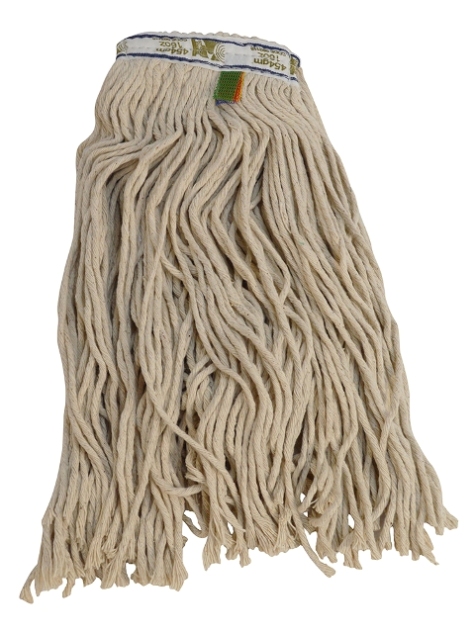How Often Should You Change a Mop Head? JanSan UK
One of the biggest questions we get asked is how often should you change or clean a mop head?
In reality, there is no fixed rule - it all depends on the environment you are mopping and which mop heads you are using. To help, we’re looking into the different cleaning areas, types of mops and best-practice mop maintenance to ensure you are using the correct mopping system.
Environments
In a sterile environment such as a hospital, mop heads should be disposed of after every use and replaced with a new one. Clinical environments should purchase disposable mop heads: made from off-cuts of cotton fabrics and rags, they can only be washed a limited number of times (and are really intended to be single-use).
However, with new advances in technology more and more environments are choosing to use a flat microfibre mop system. Here the mop head can be easily removed without touching, before being placed in a container or bag ready for washing. A new, pre-dosed mophead is then used for the next room. As mopheads are washed rather than disposed of, it is a much more sustainable way of working – and, as the cleaner no longer needs to touch the dirty mop head, it is much safer too.
In high traffic areas such as school corridors, it is probably not necessary to use disposable mop heads. With proper maintenance and cleaning, mop heads can last between 15 – 30 washes. In domestic environments, mop heads will need to be changed less regularly still.
However, it’s still recommended that you clean your mop heads after every use to ensure bacteria doesn’t multiply. Remember, when you notice wear and tear or any discolouration on the mop head, it’s time to swap them out.
Did you know?
“The average mop head contains more than eight million bacteria per 100 square centimetres. That’s hundreds of billions of bacteria that are going straight onto your floors – ripe for the spreading and the multiplying – if you are not careful.”
Different Mop Heads
Disposable Mop Heads: These semi-disposable mops are made from non-woven, highly absorbent fibre and feature a cut end with interchange fitting. These mopheads are available in a variety of colours, making them perfect for colour-coded cleaning and infection control.
Socket Mops: These types of mops are by far the most used within the cleaning industry, and are suitable for a variety of tasks. The traditional mop has a metal socket and is attached to a wooden stave; however, the use of coloured plastic varieties as part of a colour-coded cleaning system is becoming increasingly popular as a way to help prevent the spread of bacteria.
The plastic sockets attach to plastic-coated metal handles which usually incorporate a rubber grip at the top. Not only does this make them more comfortable when wringing, but the plastic fittings also make attaching and detaching mop heads much easier.
Kentucky Mops: This style of mop has a much longer yarn and is stitched in the middle using a polyester band to secure the fibres and maintain shape. The polyester band can also have an abrasive texture to enable the removal of stubborn stains and ingrained dirt on surfaces.
Like socket mops they can also be attached to ordinary wooden staves, traditionally using a metal "clip and plate”. However plastic clip and plates are now readily available in a variety of colours and can be attached and detached more easily than the traditional metal clips.
Kentucky Mops are particularly effective for large cleaning areas of flooring and can also be used for laying floor polish. However, they can only be used in conjunction with the appropriate wringer bucket.
Flat Mops: These mop heads are ideal for quick and efficient cleaning. Made from absorbent microfibre, the mop head collects huge amounts of dirt, dust, moisture and bacteria from floors and kitchen surfaces. The microfibre also requires less water and chemicals when cleaning, improving cleaning efficiencies and reducing environmental impact.
How to clean your mop heads:
Like most cleaning equipment, proper care and maintenance mean you can get the most out of your mop heads. Here are some tips we recommend:
- Wash after every use - If heavily soiled, we recommend using a washing machine at a high temperature. Alternatively, if there is not much debris you can soak the mop head in disinfectant for 10 minutes.
- Ensure your mop is completely dry after washing. Wring the mop head out and leave to air dry upside down.
- Where possible, use a mop bucket that has a clean and dirty water section, or mop with two buckets.
View our full range of mop heads & mop buckets/wringers.
Products Mentioned
Why Does The UK Trust JanSan?
It’s simple: we aim to offer a better, faster, more comprehensive choice of cleaning products including washroom supplies; wiping cloths, soaps and skin care, cleaning chemicals, mopping and floor care, cleaning equipment and waste management products. Orders for in-stock items received by 2 pm Monday to Friday are sent using next day delivery with free postage on orders over £50 (ex VAT) to the UK mainland.





